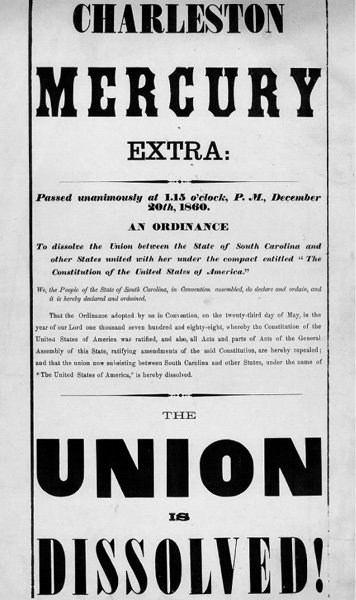
It may have been the fastest report of breaking news in the history of American journalism. When South Carolina seceded from the Union in the building that would become known as Secession Hall on December 20, 1860, the Charleston Mercury had an extra edition on the streets of Charleston five minutes after the Convention adjourned.
The broadside’s announcement of South Carolina’s secession was the culmination of Robert Barnwell Rhett’s efforts to wrest South Carolina from the Federal Union since the nullification days of Andrew Jackson. He was the father of the editor of the Mercury, a key player in the South Carolina delegation, and a volatile force in the writings of the family owned newspaper.
Several states to the north, The New York Times, in one of its pieces on the following day, was rather haughty in its understated reportage of South Carolina’s actions. In the piece headlined “The Secession Movement,” it said: “South Carolina passed the ordinance of secession yesterday at 1 o’clock P.M. by the unanimous vote of the Convention and her action was greeted with a salvo of a hundred guns. As this step was universally anticipated, it will create no special uneasiness. It does not change the relations of South Carolina to the Union in the slightest degree . . . ,” then, as if reconsidering its thoughts added. . . “though it will very possibly be followed by acts that will have that effect.”
